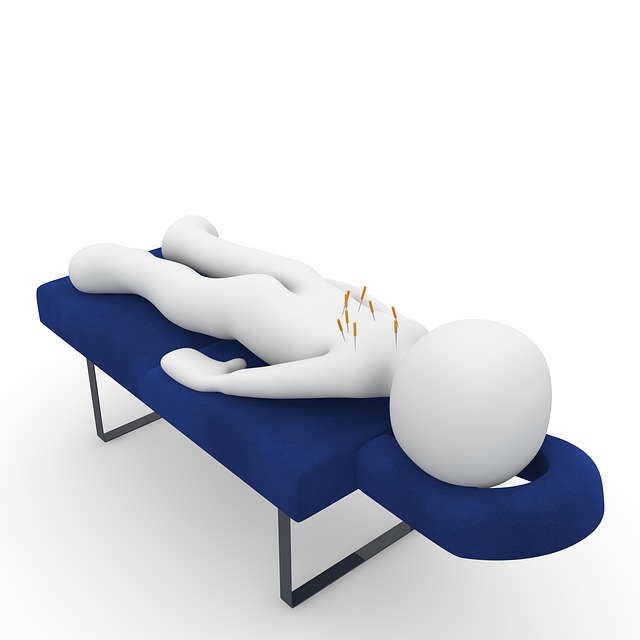Cold therapy, encompassing ice and cryotherapy, is a powerful tool for athletes recovering from sports injuries. Techniques like the RICE method (Rest, Ice, Compression, Elevation) reduce inflammation, pain, and swelling, accelerating healing and restoring mobility. Advanced methods, such as cryotherapy chambers and cold water immersion, offer deeper cold exposure, enhancing recovery times and athletic performance. Real-life success stories highlight its effectiveness for muscle strains and knee injuries, making it a game-changer in sports injury care.
Enhancing Flexibility and Mobility Post-Injury with Cold Therapy
Cold therapy has emerged as a powerful tool in the realm of sports medicine, offering effective solutions for athletes seeking faster and more efficient injury recovery. This article explores the science behind cold therapy and its numerous benefits for active individuals, particularly when it comes to post-injury rehabilitation. From understanding the RICE method to real-life success stories, we delve into practical techniques that combine cold compresses, water immersion, and ice therapy to revolutionise sports injury care.
Understanding Cold Therapy: An Effective Tool for Injury Recovery
Cold therapy has emerged as a powerful tool in the realm of sports injury recovery, offering significant benefits for athletes seeking to enhance flexibility and mobility post-injury. This therapeutic approach, often referred to as ice therapy or cryotherapy, involves the application of cold compresses, such as ice packs or cold water immersion, to affected areas. By doing so, it helps reduce inflammation, alleviate pain, and provide a soothing effect on muscle injuries.
The RICE method—Rest, Ice, Compression, Elevation—is a widely recognised protocol for managing sports injuries. Icing, in particular, plays a crucial role in this method. The benefits of icing sports injuries are manifold; it constricts blood vessels, thereby reducing the flow of fluid to the injured site, which helps minimise swelling and pain. Additionally, cold therapy can accelerate the healing process by promoting the formation of new blood vessels and improving circulation once the injury has healed. This enables athletes to regain flexibility and mobility more efficiently, ensuring they can return to their active lifestyle or sport sooner.
The Science Behind Cold Therapy and Its Benefits for Athletes
Cold therapy, particularly in the form of ice therapy and cryotherapy, has long been recognized as a powerful tool for athletes looking to enhance recovery from sports injuries. The science behind it lies in the physiological response it elicits in the body. When cold is applied to an injured area, it helps reduce inflammation by constricting blood vessels, which in turn minimizes swelling. This immediate effect not only provides temporary pain relief but also sets the stage for faster healing.
Moreover, cold therapy for sports injuries supports the RICE method (Rest, Ice, Compression, Elevation), a widely recommended strategy for managing acute injuries. By applying a cold compress or immersing the affected area in cold water, athletes can benefit from improved circulation and reduced muscle spasms. The benefits extend to both short-term recovery and long-term performance, as it helps maintain optimal muscle function and reduces the risk of future injuries.
Implementing Cold Therapy Techniques: RICE Method and Beyond
Implementing Cold Therapy Techniques: RICE Method and Beyond
Cold therapy, a staple in sports medicine, plays a pivotal role in managing and accelerating injury recovery, particularly for athletes. The RICE method (Rest, Ice, Compression, Elevation) is a well-known protocol that forms the foundation of cold therapy for sports injuries. By applying ice or a cold compress to an injured area, inflammation is reduced, pain is minimized, and swelling is controlled—essential steps in the initial stages of injury recovery. This simple yet powerful technique is especially beneficial for muscle injuries, sprains, and strains common among athletes.
Beyond the RICE method, advancements in cold therapy for athletes include cryotherapy chambers and cold water immersion tanks. These innovative approaches offer deeper and more prolonged cold exposure, enhancing the benefits of icing for sports injuries. The controlled environment of a cryotherapy chamber or the calming effect of a cold water immersion can significantly reduce muscle soreness, speed up recovery times, and even improve athletic performance by promoting better blood circulation once the body reheats.
Success Stories: Real-Life Examples of Cold Therapy in Action
Cold therapy has become an integral part of injury rehabilitation, especially for athletes and active individuals suffering from sports-related injuries. Many success stories highlight the effectiveness of this treatment method in speeding up recovery and restoring mobility. For instance, professional athletes have reported significant improvements in their performance after incorporating cryotherapy into their routines. One such case involves a runner who, after an intense training session, experienced a severe muscle strain. By applying ice therapy consistently, including cold water immersion and regular cold compresses, the athlete was able to reduce inflammation, alleviate pain, and gradually regain flexibility within a few weeks.
Another compelling example is a cyclist who sustained a knee injury during a competition. Following the RICE method (Rest, Ice, Compression, Elevation), this athlete dedicated several days to icing their injured joint, which led to a remarkable decrease in swelling and discomfort. As a result, they could commence physical therapy with improved range of motion and a stronger foundation for rehabilitation exercises. These real-life instances demonstrate how cold therapy for sports injuries can be a game-changer, offering both short-term relief from pain and inflammation as well as long-term benefits for enhanced mobility and faster recovery.
Cold therapy has emerged as a powerful ally in the journey towards regaining flexibility and mobility after an injury. By leveraging techniques like the RICE method, cold compresses, and even cryotherapy, athletes can accelerate their recovery process, reduce pain, and minimize muscle stiffness. The scientific evidence supporting these practices highlights their effectiveness in treating sports injuries, making them essential tools for any active individual looking to regain their range of motion and return to peak performance. Incorporating cold therapy into your injury care plan could be the key to a faster, more successful recovery.
